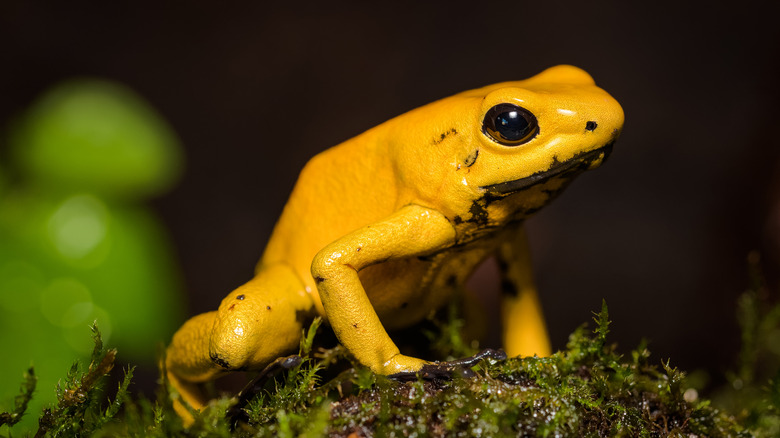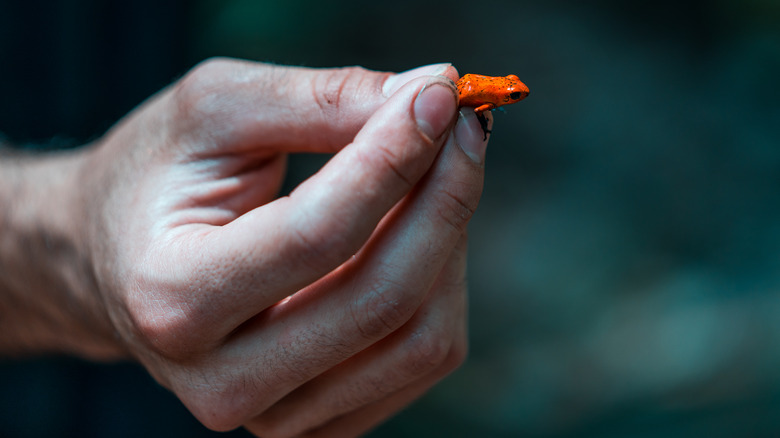Here's What Makes Poison Dart Frogs So Dangerous
When one thinks about deadly animals, tigers, lions, and bears is what probably comes to mind. Quite possibly, however, the most deadly animal is the size of a paperclip (via National Geographic). This is none other than the poison dart frog. Hailing from the rainforests of Central and South America, the poison dart frog is a colorful amphibian that mostly lives on the forest floor (via San Diego Zoo).
As aesthetically pleasing as their colorful skin might be, it's actually a deadly warning. Referred to as aposematic coloration, this evolutionary adaptation screams "I'm dangerous, don't eat me!" (via Zoo Atlanta). The poison is found on their skin, making them toxic to the touch, never mind consuming. That being said, the poison dart frog has only one predator, a water snake, that is immune to its toxicity.
Scientists predict that the poison comes from the frog's diet. They eat beetles, ants, termites, and more. The belief is that specific toxins are passed from the bug to the frog, which is then collected in glands in the frog's skin. Interestingly enough, poison dart frogs raised in captivity, away from their natural habitat and diet, don't develop poison.
Tiny but lethal
It's safe to assume that if encountered in the wild, the poison dart frog will live up to its name. This is due to the fact that they secrete batrachotoxin, per Zoo Atlanta. This toxin attacks the nervous system and causes convulsions, muscle contractions, swelling, nausea, and paralysis (via San Diego Zoo). Of course, it can also lead to death, as there is no antidote or treatment for the poison.
At 2 inches long, the golden poison frog is the deadliest of these pocket-sized creatures (via National Geographic). It has enough poison to kill 10 grown men, 22,000 mice, or three bears (via BBC Earth). Moreover, there's a reason why the word "dart" is in their name.
Some indigenous peoples of South America use the poison to coat the tips of the blow darts they use for hunting. Using waxy leaves, they pick up the frog and dip the blow dart in the frog's skin secretions. One golden poison frog can supply poison for up to 50 darts, and the poison can remain active for up to a year. So potent is their poison that medical research is being done for its potential use as a painkiller.
Because of climate change and the destruction of the rainforest, the population of poison dart frogs is diminishing (via the Berkshire Museum). They have also become increasingly popular pets in the U.S., further adding to their decline.

